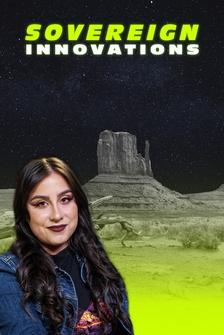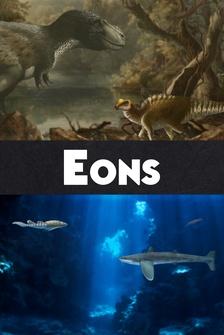- If you've spent any time at all talking about climate change basically anywhere on the ol' world wide web, then you've probably seen some smarty pants chime in with a comment like this one.
"The climate change is naturally.
Ever heard of an Ice Age?
I read there were palm trees on Antarctica once."
Checkmate, human-caused climate change disproved.
Now if you're like me, this comment makes your eye twitch in that particular way that only seems to happen when you're considering just how hard you can smack your own forehead without giving yourself a concussion.
But then, right before you do that, you remember you're an educator.
And that there was a time in your life, not that long ago, when you too did not understand this particular thing.
You then recall that each of us navigates complex ideas such as this one with our own unique levels of education and experience, the boundaries and limitations of which are often the result of much larger issues of access or luck that are far outside of our own control, and that misconceptions or failures of understanding are just as often the result of circumstances, and not lack of a desire to learn.
With this realization in hand, it dawns on you that for every idea we may view today as common sense, or even obvious, we were all ignorant once.
And that people like this are definitely not just trolling the rest of us with bald-faced climate denial.
So in that spirit, let us embrace the opportunity to use this as a teaching moment, a chance to reduce our ignorance, expand our enlightenment, so that we may all emerge from this chrysalis of inexperience understanding something that we did not before, and perhaps, together, we can confine this to the dustbin of YouTube comment history.
We're gonna debunk this, okay?
That's what I'm saying.
(upbeat music) Hey smart people, Joe here.
So here's the deal.
Natural forces influence climate change.
This has been true throughout Earth's history, and it's still true today.
Climate scientists know this.
In fact, it is by studying these natural climate-changing forces that we understand much of what we do know about human-caused climate change.
So not only are climate scientists aware of these natural cycles, they discovered most of them.
As a result, every climate model used by climate scientists today factors in the effects of these natural forces.
And this is important because even with all of these natural ways to change the climate included, the only way to get climate models to even come close to what is actually happening, is to add in all the stuff that humans are doing to the climate too.
In other words, natural forces can not account for the speed and scale of climate change since the start of the industrial revolution, particularly from the second half of the 20th century to today.
To explain that, we have to add one more factor to the equation, us.
So here's what we're gonna do in this video, we're gonna talk about the big-picture of Earth's climate and how, when certain things get out of balance, Earth's climate warms up, or cools off.
Then, we're gonna unpack a bunch of those natural forces, again, that scientists know a lot about, that push Earth's climate one way or the other.
And finally, we're gonna explain how, exactly, we know that what's happening to Earth's climate today and into the near future isn't due to those natural forces, but rather is our fault.
(twinkling music) So, Earth's climate, how that work?
Well, it's complicated.
Fully understanding the thermodynamic Rube Goldberg machine that is The Climate is more appropriate for the scope of a full university-level course, not a single YouTube video.
But the part of Earth's climate we're most interested in is temperature.
Temperature is essentially just a measure of how fast something's atoms are jiggling.
More jiggliness means higher temperature and less jiggliness means lower temperature.
You might also know that when something is jiggling a lot, it has more kinetic energy than something that isn't jiggling as much.
♪ Don't jiggle jiggle ♪ - You see, something doesn't have heat, it has energy.
We can think of heat more like energy on the move, from some place over here to someplace over there.
So when we heat something up what we really mean is we've moved some energy into that system, which can make its stuff jiggle more, which raises its temperature.
And sometimes the thing we've heated up can give its energy to something else, and heat it up, and so on, and so on.
Congrats, now you know enough thermodynamics to figure out global warming.
So, Earth's temperature begins here.
A gigantic ball of jiggly stuff called the sun.
Energy from the sun aka sunlight takes a roughly eight minute trip to Earth, where right off the bat about a third is reflected back into space by bright stuff like clouds and ice.
Most of the rest is absorbed by the land and ocean, a small amount is absorbed directly by the molecules in the atmosphere.
All of this absorbed energy heats up our air, water, and land.
It basically makes all of Earth's atomic stuff more jiggly.
But as all that stuff-rocks, air, oceans, warms up, they can transfer their heat to other stuff, in the form of thermal infrared radiation energy, the stuff The Predator can see.
So as land, for instance, gives off energy it originally got from sunlight, that energy zips up into the atmosphere where it's absorbed by water vapor and other gasses like carbon dioxide and methane.
But this is also where things really start to warm up, because these are those greenhouse gases you've heard so much about.
And they're special, because when any of that energy that Earth absorbs and then re-releases hits a greenhouse gas molecule, it can suck it right up and re-radiate it, warming the atmosphere and the land and the ocean and everything else.
It's just like how bricks in a pizza oven hold on to heat and slowly radiate it out so it can be absorbed by that delicious bubbly cheese that you're gonna burn your mouth on, no matter how many times you've promised yourself you learned your lesson last time.
This absorbing and re-radiating of heat by the atmosphere is the greenhouse effect, and just like your favorite dab on Hot Ones, it can actually be a good thing as long as there's not too much of it.
Because if we had no greenhouse effect, the average temperature on Earth would be more like -18 degree Celsius instead of the comfy 15 degree Celsius that it is today.
In other words, we'd live on an ice planet.
Or not live, more like it.
Of course, on the other hand, if there's extra greenhouse effect, like say, from the addition of a bunch more Greenhouse Gases to the atmosphere, then you get, well, what's happening today.
The planet gets hotter, the air, the land, the water, all of it.
And like the little domino in that one meme, what seems like a tiny change here to Earth's temperature, down the line can mess up some pretty big things, wind, ocean currents, precipitation, you name it.
This finally brings us to that title card we put up at the beginning of this whole section of the video.
Big picture, you can think of all this energy transfer, from sun to land and ocean to atmosphere, back to land and ocean, and all the little energy swaps in between, well it's kinda like trickle down economics, only it actually works.
When you think about it, Earth's climate works kind of like a business.
You've got budgets and inventories.
Just like with money, Earth's energy budget is the balance of what comes in from the sun and what goes out into space over a certain amount of time.
Whether that budget is positive or negative, gaining or losing impacts the total energy inventory on Earth.
Basically, if Earth's not selling enough energy back into space, it's gonna end up with excess inventory.
Only in this case, it's not a warehouse full of rubber duckies or pandemic Pelotons, it's energy that is heating up land, air, and ocean a lot.
How much is a lot?
Well, the unit we use for energy is called the Joule.
Not to be confused with Jewel or Juul.
One Joule is about as much energy as it takes to heat up a thimbleful of water by one degree Celsius.
According to the IPCC, those rascals who keep scaring the pants off everyone with those darn climate reports, every square meter of Earth's surface has absorbed about 0.57 Joules of energy every second since 1971.
Doesn't sound too bad, right?
Thing is, there's a lot of square meters on this here planet.
Approximately, this many of them.
Altogether, that's 291 trillion extra Joules of heat, or the equivalent of detonating 4.5 Hiroshima atomic bombs or blowing up 10 Big Bens full of dynamite every second, for Elon Musk's entire life.
So now you've got the basic understanding of how Earth's climate energy budget works, and why it's so full of extra heat energy.
But hey, nobody seriously argues that Earth isn't getting warmer.
Because we all have thermometers.
What we're here to talk about is why.
Specifically, whether all of this could be explained by natural forces and cycles instead of us.
Now the difference in incoming and outgoing energy is described by a term called climate forcing, or more often, radiative forcing.
If that number is negative, the planet cools off.
If that number is positive, it's getting hot in hur...
There're many things that can force Earth's climate to take in or put out more or less energy from the sun.
And many of them happen totally naturally, and have either happened many times in Earth's past, or are still happening today.
So let's go through several of these, learn how they work, and what effect they have on Earth's comfy warm blanket of an atmosphere.
Because lists are fun, and there's really no better way to do this.
As we discussed, basically all the energy that enters the Earth system comes from the sun.
But you might be surprised to learn that the sun doesn't always shine the same.
And I'm not talking about how it disappears every night without so much as a goodbye, making everything dark and scary and full of weird noises that make me, I mean you hide under a blanket 'til the safety of dawn's first light.
No, I'm talking about the sun's natural cycles of dimming and brightening.
Now, over long periods of time, as in over the sun's entire four-plus billion years of existence, it's been gradually getting brighter, by about 0.009% every megayear, which is a fancy way to say 1 million years 'cause it sounds cool.
And while this very, and I must emphasize very, gradual brightening is important when you're considering, say, the conditions during the origin of life on Earth versus today, it simply isn't happening fast enough to account for recent rapid global warming.
But the sun does go through cycles of brightening and dimming on much shorter time scales.
For the past half century or so, we've been able to measure the sun's intensity really accurately with all our space machines.
Before that, thanks to astronomers looking at the sun and counting sunspots, which by the way you should never ever do, we know now that the sun's intensity goes up and down by about 0.1% every 11 years.
So hey!
The sun gets brighter sometimes!
That could throw things off.
Unfortunately, when you average out the brightness of the sun over the past four decades, it's been remarkably steady, even maybe showing a slight dimming trend.
All while Earth's average temperature, as you are probably tired of hearing by now, has gone the other way, up.
On longer time scales, the sun does sometimes enter longer periods of lower-than-average or higher-than-average brightness that can affect warming or cooling over decades, and while these have happened many times in human history, we know this isn't happening now, because, again, science people have been looking at the sun, which, I must emphasize again, you should never ever do, Moving past the sun, there is one violent factor that can cause huge swings in Earth's energy balance, volcanoes, and all their big hot gassy burps.
Now, besides lava, which we'll get to, an erupting volcano releases lots of stuff that can affect the amount of energy Earth holds on to or sends off into space.
Now, when Vulcan, the god of fire, gets all angry and sends one of his molten mountains spewing into the atmosphere, not how it works, along with that comes lots of ash and sulfur, the ol' brimstone to go along with all that fire.
Both of these can increase the amount of solar radiation that bounces back out into space, either through seeding clouds, which are basically bright sunlight reflectors, or by directly reflecting that sunlight off of tiny aerosols of ash or sulfur compounds.
Basically, volcanic ash and sulfur cause Earth to bring in less energy than it loses, so they're an overall cooling effect that can last a couple decades.
But this is a pretty well understood climate process, and volcanoes are erupting today at about the same rate they have for most of the time humans have been on this planet.
So we can't blame this warming on some volcano drought or something.
But hoo, that's not the only effect volcanoes can have on climate, dear friends.
No, no, we're just getting started with this lava-fest.
Erupting volcanoes and other big leaks of melty stuff from inside the Earth, those also release enormous amounts of carbon dioxide, a greenhouse gas.
That CO2 mostly comes from rocks that get recycled back into melty stuff thanks to plate tectonics, releasing their carbon into the magma that eventually spews out during an eruption.
And eruptions can release a lot of CO2.
Like, this one time around 252 million years ago, eruptions in modern-day Siberia covered 2 million square kilometers of land with lava, and along the way set all the buried coal in the area on fire, releasing just oodles of CO2 into the atmosphere, warming the planet enough to kill more than 90% of life on Earth.
It was the largest mass extinction ever, and it's all thanks to warming caused by a 2 million square kilometer eruption.
So, yikes!
Volcanoes can really get things hot and sweaty!
Thing is, that's not happening today.
Like, we know how many eruptions happen on Earth.
We can see them from space.
We can measure them.
It's not like there's some secret pile of volcanoes going off that nobody knows about.
There are memes that go around, saying stuff like "In one eruption, Italy's Mount Etna releases more than 10,000 times the CO2 that humans have in our entire existence," that's just not true.
Humans emit at least 60 times more carbon dioxide than volcanoes do each year.
A big eruption might match human emissions for a few hours, but they just don't last long enough or happen often enough to rival us.
In fact, just a handful of U.S. states emit more carbon dioxide in a year than all the volcanoes on the planet combined do.
And besides, those large eruption events that have massively thrown off Earth's energy budget in those ancient before-the-dinosaurs times, they happened over tens to hundreds of thousands of years.
Volcanic CO2 just can't explain modern warming.
Hey, we're not done yet, but real quick I wanna take a quick moment to thank our Patrons.
Because your support really truly helps us make these videos.
We can't thank you enough.
If you wanna join our community of supporters, please do check out the link down in the description.
And I also wanna let you know that another great way to support the show for free is by watching new episodes as soon as they're first released.
This helps spread the show to other subscribers and to new viewers.
If you're already part of the early squad, thank you, and if not, hit the bell icon next to the subscribe button, you know where it is.
Our whole community of curious learners will thank you.
So, during all that talk of mass extinctions and eruptions big enough to cover an entire country, maybe you've been asking yourself "Why isn't CO2 that high anymore?
What brought it back down?"
You're thinking.
I like that.
Well, during the Great Dying, global CO2 levels went up to at least 2000 parts per million.
I mean, compare that with our measly 415 or so parts per million today.
I mean, what, did plants eat it all?
No, plants didn't eat it all.
See, Earth has this cool trick that keeps CO2 levels balanced in the atmosphere.
Thing is, like a sloth magician, it's a trick that takes a really long time to pull off.
Now, kucky for you, I'm the kind of magician who doesn't mind telling you how the trick works.
After an eruption, there's a bunch of fresh new rock on the surface and a bunch of extra CO2 in the air.
Carbon in the atmosphere combines with water to form a weak acid that falls to the surface in rain.
That acid dissolves those fresh new rocks in a process called chemical weathering, which releases ions that get washed into the ocean.
There, ions like calcium combined with dissolved carbon dioxide pulled from the air to form calcium carbonate, which corals and plankton and other organisms use to make their shells, until they die, and then that calcium carbonate falls to the ocean floor, eventually turning into limestone rock.
So if, say, you've got a bunch of volcanoes burping CO2 and lava out, give Earth several hundred thousand years and all that carbon will get buried at the bottom of the ocean again.
It's a pretty cool way of keeping things perfectly balanced, as all things should be, as long as you're not in a hurry.
This slow magic trick is basically the invisible hand that keeps Earth's natural thermostat from getting too hot.
But again, overall it cools Earth down, so it too can't explain recent warming.
What about weird short-term climate cycles with cool names like the El Nino-Southern Oscillation?
Maybe you read on Wikipedia, they can mess with ocean temperatures and weather patterns and all kinds of stuff.
Could that explain recent rapid climate change?
Well, a few decades ago it was, in fact, hard to show that global warming caused by humans was statistically significant over these natural cycles.
But we've blown way past those error bars, and although scientists still don't perfectly understand these cycles, their magnitude is just too small to explain the extreme heating we are seeing today.
And speaking of the oceans, it's time we give them some credit for saving our you-know-whats.
Because out of the 435 zettajoules of extra energy that we've added to Earth's budget, you remember, all those dynamite-filled Big Bens we've been blowing up every second?
Well, 91% of that extra heat energy has been absorbed by the oceans, which, don't get me wrong, sucks for the oceans, but that big wet heat battery has slowed down the heating of everything else.
If, for instance, all of that extra heat energy oceans have absorbed on our behalf were suddenly released into the atmosphere, it would be more than 60 degrees hotter everywhere, which is just insane and would lead to the extinction of every living thing bigger than a microbe on this planet.
So thank you oceans.
And we're sorry.
Other than an asteroid impact, or, I don't know, photosynthesis evolving, there really isn't another process in Earth's history that could have a major impact on CO2 levels in the atmosphere or on Earth's energy budget, in either direction.
But there is one process that's bigger than Earth that we haven't talked about, wobbly orbits.
Since Earth's energy budget is influenced by the amount and intensity of radiation energy reaching Earth from the sun, changes in Earth's position relative to the sun can have major effects on Earth's long-term climate.
It's thought that slight tweaks to Earth's orbit are responsible for triggering the beginning and end of recent Ice Ages.
One of the major wobbles you should know about is the shape of Earth's orbit, known as eccentricity.
Basically how circular or elliptical is our path around the sun, as Earth gets gravitationally tugged on by all those other planets that no one even lives on.
Right now, Earth is closest to the sun in early January, and at its farthest in early July.
That means about 6.8% more incoming solar radiation reaches Earth in January than in July.
But over the next 100,000 years or so, the difference in solar radiation between Earth's closest and farthest approaches to the sun will be about 23%.
There's also the angle Earth's axis is tilted, known as obliquity.
Now, while Earth's axis is currently around 23.5 degrees off vertical, over the last million years, it has varied between 22.1 and 24.5 degrees.
And since this tilt can affect how intense sunlight is on a given area of Earth's surface, this can affect Earth's overall climate, especially the extent of ice at the poles.
Finally, there's the precession of Earth's axis, kinda like how a spinning top turns as it turns.
Not only does this mean that, over time, the north star won't be the north star anymore, but also when combined with those other orbital wobbles, it can exacerbate the difference between winter and summer in each hemisphere.
Collectively, these orbital movements are known as Milankovitch cycles, named in honor of slightly off-kilter Hollywood actor John Milankovitch.
Wait.
I'm being told that they are in fact named for Serbian scientist Milutin Milankovitch.
Depending on how the peaks and valleys of the Milankovitch cycles line up, or don't, they can change how much solar radiation hits Earth's mid-latitudes by up to 25%.
That can take enough energy out of Earth's budget to kick off long stretches of time where Earth is covered in massive ice sheets, and global sea levels drop, like it was back when humans could just walk over into North America.
We call those Ice Ages.
Milankovitch cycles can also add plenty of extra energy into Earth's budget to warm the planet back up.
Which is why I can't walk to Siberia today.
Of course, by this point you won't be surprised to learn that scientists have these patterns really well calculated these days, and yeah, they're not enough to explain recent global warming either.
(gentle music) This is not a comprehensive list of all the natural forces that can influence the climate.
There's several other factors that scientists consider when trying to figure out the cause of all of this, like how dark or light land and ocean are, and therefore how much solar energy they absorb or reflect.
Take ice caps, for instance.
As they get dirtied by soot and ash from distant fires and smokestacks, that ice gets slightly darker and absorbs more heat.
Or when forested areas are cleared, sometimes land gets lighter in color, and absorbs less heat.
So what does it all mean?
I've made it this far into the video, you're saying to yourself.
Give me the payoff!
Well, here it is.
Scientists are very aware of these natural cycles and natural factors that influence the climate.
They're aware of them because it was climate scientists who discovered these things.
They didn't just decide one day to start ignoring them.
These natural effects are already factored into our climate models, so if you think that palm trees in Antarctica or random warm periods limited specifically to one small area in northern Europe are enough to pull the four-dimensional checkmate on climate scientists, well, they're not.
Every single one of these factors, and a whole lot more, is included in modern climate models.
And the only way to make those models match up with the warming we're actually seeing is by including human activities.
And when we do include human activities, the net total of all the warming and cooling effects that scientists know about, shows that Earth's energy budget is way in the positive.
We're drowning in extra Peloton inventory here, people.
Only these Pelotons will make the planet unlivable for your children and grandchildren.
We can do better!
Modern climate change is due mainly to human activity, specifically our insatiable thirst for putting extra greenhouse gases into the atmosphere.
And there are ways that we can tell that extra CO2 that's entered the atmosphere since the Industrial Revolution came from fossil fuels, and not volcanoes or whatever, thanks to the ratios of different isotopes of carbon in the atmosphere's CO2.
I covered exactly what that means, and why it's the smoking gun for human-caused climate change in this video up there, but in many ways that's beside the point.
An extra debunking that would just feel like piling on now.
But you should go watch it.
Just not yet.
I'm almost done.
The point is, this comment is so frustrating because no serious person really wonders whether climate change is happening, or really even why it's happening.
According to researchers at Yale who track beliefs and attitudes around climate change over time, Americans who think global warming is happening outnumber those who think it is not happening by a ratio of six to one.
And more than half of Americans understand that global warming is mostly human-caused.
Comments like this, if you ask me, are really just a new type of climate denial, designed to make you think, "Hey, climate change has happened before!
It's been hot!
It's been cold!
All these other times it happened, it wasn't our fault!
So there's no reason to worry or do anything!"
Except they always forget to mention one key thing.
Humans didn't exist during basically all of those other times.
Well guess what, Neo.
You do exist.
This is real.
It's happening.
Don't let them trick you into accepting the status quo, that as we sit down to drink our coffee in the middle of a burning world, that this is all somehow actually fine.
Because it isn't fine.
And it isn't normal.
Because what they really want you to forget is that if we are the cause of all this, then we can be the solution too.
Don't you forget that.
I actually hope for the day when I or my grandchildren can say, "Yeah, climate change actually is totally caused by natural cycles," and have it be true, because that will mean we did what we have to do, and we fixed this.
Stay curious.















